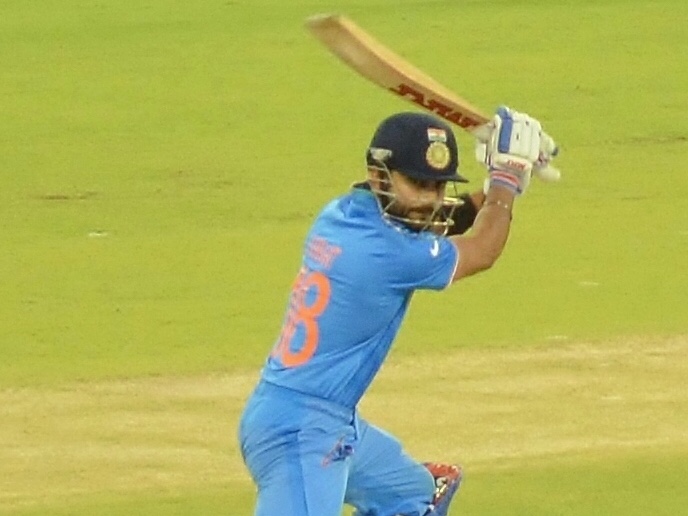How to Finish a Twenty20 Game Like Kohli
 Virat Kohli is an astonishing Twenty20 finisher. How does he do it?
Virat Kohli is an astonishing Twenty20 finisher. How does he do it?
What better way to find out that to examine one of his great innings in detail? Here is his brilliant 82 in the World T20 analysed. You can take the lessons from his method into your game.
First, let’s set up the situation: Chasing Australia’s 160 on a slow pitch. Balls were sticking and keeping low. It was, however, a fast outfield, Kohli walked out first drop in the fourth over.
How did he pace it?
Thriving early
In T20 you don’t have the luxury of defence. You need to score from almost every ball. But even Kohli can’t start swinging from the start. So, he looked to rotate the strike and hit the gaps to keep his strike rate around 100.
He hit length balls off his pads into the leg side because it was poorly defended. Even balls just outside off were worked into the gap:

Anything with width outside off, he looked to pick a gap in the off side and score a boundary:

When he needed a run, he would step back in his crease and drop the ball at his feet for an easy single.

Recovery mode
Kohli was sublime. He was picking boundaries in his strong areas and singles everywhere else. At the other end it was a different story. As he eased to 12 from nine balls, India wobbled at 50–3 in eight overs. They were behind the rate and losing resources.
Kohli is not the type to panic. Instead he judged that there was enough time to make up the rate and continued with his plan. He was on 35 in 30 balls at the end of over 14. India were 94–4, needing 11 an over.
Kohli still only had three boundaries, showing how few risks he was taking. He hit one risky six from Maxwell, coming down the wicket, not getting to the ball but still hitting on the up. It was a misjudgement but his skills got him out of trouble.
That aside, he simply looked to keep going to set up the explosion.
Go for broke
With Dhoni as his partner, Kohli decided it was time to go for it. He had his eye in.
His method for hitting out is to use a “baseball style” power hit, adjusted slightly. The strength of this shot is it is premeditated but adaptable, meaning you can go for it against a lot of balls.
Here he plays it to a short ball that doesn’t get up, arriving at thigh height. Note the locked front leg and the powerful hip drive into the ball like a baseball slugger.

Here he plays it by coming down the wicket. However, he ends up in the same power position.

He also plays it as a more traditional pull shot when the bowler strays onto his hip. You can see from the side view, his weight is on the front foot as you would see in baseball, but his upper body is in the orthodox pull position.

How did he use this against fuller balls though?
Many criticise power hitting for its lack of ability to adapt to fuller bowling. Kohli has no issues there. He can even hit yorkers for a boundary, as he did late in the game:

And he easily put a half volley away.

You’ll note some technical weaknesses with the shot. He plays with his head to the off side, plays away from his body and sits on the front foot. This works for him in this format because he hits most balls. And outcome is more important than looks.
With boundaries flowing freely in this phase he blazed at a strike rate of over 200, combined with Dhoni and swept India to victory in the last over.
Kohli had combined an effective technique with tactical nous (playing at a lower gear until late in the match) and mental toughness in ignoring two points where many would panic. He had a simple plan and confidence to execute built on experience. This is what it takes to chase under pressure.
Can you learn and do the same?
- Login to post comments

